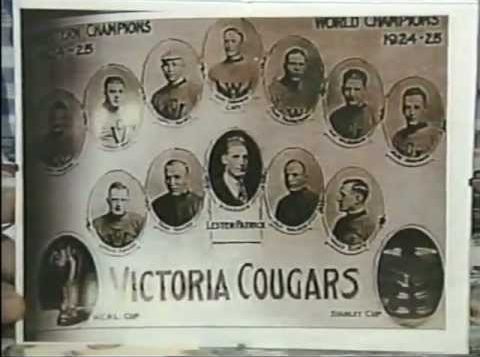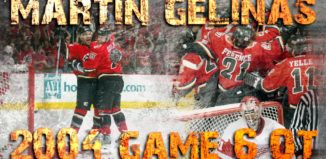This Day in Hockey History – May 5, 1926 – Sun Sets in the West and Rises in the East
As of May 1926, the NHL reigned supreme as it bought out its biggest competitor, the Western Hockey League (WHL). Despite the best efforts of the Patrick brothers, Lester and Frank, the WHL just wasn’t able to compete financially with the eastern teams in the NHL. They went shopping for the best deal for their players on May 2 and came to an agreement May 4. The news of the deal broke in the western provinces and states on May 5, 1926. When the NHL held their annual meeting that September, they worked to finalize which of their teams would have which players.
Although the sport of hockey was slower to reach the west, the coast and the prairie still have deep hockey histories. The Patrick brothers founded the Pacific Coast Hockey Association (PCHA) in 1911 with franchises in Victoria and Vancouver, that despite changing names held fast until 1926. Ten years later, the amateur Big Four League collapsed to become the professional Western Canada Hockey League (WCHL). The Edmonton Eskimos and the Calgary Tigers of the former were joined by two new franchises, the Saskatoon Sheiks and the Regina Capitals. The PCHA and the WCHL played each other to determine the Stanley Cup challenger until 1924, when the PCHA folded leaving its Victoria and Vancouver clubs to join the WCHL. The following season, the Regina franchise moved to Portland, Oregon (and became the Rosebuds), which caused the league to drop the word “Canada” from its name.
Though newly christened, the WHL only lasted that one season. The prairies didn’t have the population to sufficiently increase gate revenue, and the teams on the coast had to pay high prices to maintain indoor rinks. Basically, the local news explained, the WHL “expended more than the volume of returning traffic demanded.” Meanwhile, by expanding into the U.S. the NHL was attracting wealthy franchise owners and began paying players higher salaries. The new teams all hunted for skilled skaters to fill their rosters. Soon, the western teams had trouble competing for and keeping the best players. They tried expanding down the Pacific Coast (to San Francisco, Oakland, and Los Angeles), but negotiations unexpectedly fell through.
At the end of the 1925-26 season, the Victoria Cougars lost the Stanley Cup to the Montreal Maroons of the NHL. Still, the Cougars held the distinction of being the last non-NHL team to hold the Cup (having defeated the Montreal Canadiens for it in 1925.
After losing the Cup, the WHL began selling off players in earnest. Representing the league, Frank Patrick first approached the brothers’ friend, Art Ross of the Boston Bruins. He got Bruins owner Charles Adams to offer $300,000 in return for every player in the WHL, which he would then sell to the other NHL clubs. Realizing this would give Boston the advantage in player selection, the NHL board of governors took over the purchase of all the contracts. In what was called the “biggest sale in hockey history”, the money would be used to compensate the owners of five WHL franchises (because apparently the Saskatoon club had already been sold).
The key parts of the deal involved the two newest NHL franchises. Chicago bought the contracts of the Portland Rosebuds for $100,000 and became the Black Hawks. Detroit bought the Victoria Cougars players (for the same price) and became the Detroit Cougars. Unfortunately, without having an arena ready in Detroit, they played their entire first season in Windsor, Ontario. They gave up two players to steal Art Duncan (formerly of the Calgary Tigers) as a player-coach but fired him before even making it to Detroit. After a few seasons, the Cougars became the Falcons and then the Red Wings.
At the time of the sale, it was rumored that the Saskatoon Sheiks had been purchased by the other recent addition, the New York Rangers. Col. J.S. Hammond had just announced (without disclosing names) the purchase of ten players. While the entire team did not go directly into the Rangers, two of the most famous players (brothers Bill and Bun Cook) did. Another Sheiks star, Newsy Lalonde (as a coach), went to the New York Americans instead. Toronto separately also bought many Saskatoon players.
The other three WHL teams (the Vancouver Maroons, Edmonton Eskimos, and Calgary Tigers) would be divided (via a committee) amongst the NHL teams. Many Eskimos (including Eddie Shore and Duke Keats) went to the Bruins for $50,000. The Rangers got Vancouver’s Frank Boucher. The Canadiens focused on defense to take Herb Gardiner from Calgary and paid Saskatoon extra for goalie George Hainsworth.
In addition to players, as predicted, the Patrick brothers also went east to lead NHL teams. The Vancouver Sun said of the brothers, “In the last analysis they are clean-cut, honest figures in the world of men and affairs, who stand four-square as reputable citizens and super-strategists in the industry that is hockey.”
With all its players sent east, what was the fate of the west? Vancouver press pointed out that as “one of the best hockey towns on the continent,” they suffered the “fate of smaller sisters because of geographical isolation.” Some out west bemoaned, “It is the passing from the Western country of major-league hockey probably for all time, at all events for an uncertain term of years.”
However, Calgary claimed that they (and Saskatoon and Edmonton) “have been prepared for this news for several weeks and it is known that a movement has been started to reorganize the old Western Canada League.” E.L. Richardson, former WHL president, felt that the “west cannot do without hockey” and “some steps will be taken to prepare for another league, maybe of a different standard for next season.” Already, they were predicting a drop to a lower level of play, perhaps as farm teams for the NHL (like the arrangement in baseball).
By September, the NHL negotiated with the newly reorganized three minor-league branches, which included the Prairie League. The Prairie Hockey League (PHL) formed with three of the WHL teams (Calgary, Edmonton, and Saskatoon), a returned Regina team, and the Moose Jaw Warriors. The league couldn’t get enough fans and these teams pretty much folded. The PHL essentially became a local Saskatchewan league for its second year and then disbanded.
That left the NHL as the only pro league in the running for the Stanley Cup as of the 1926-27 season, even though the competition didn’t officially switch from challenges to playoffs until 1947.
Additional Sources:
- Mike Commito, Hockey 365: Daily Stories from the Ice (Toronto: Dundurn, 2018), kindle edition.
- Stephen Laroche, Changing the Game: A History of NHL Expansion (Toronto: ECW Press, 2014), 35-58.
- John Chi-Kit Wong, Lords of the Rinks: The Emergence of the National Hockey League, 1875-1936 (University of Toronto Press, 2005), kindle version.
- “Confirms Sale of the Victoria Cougars,” Victoria Times Colonist, 5 May 1926, p. 10.
- “Tigers Will Go to the N.H.L.,” Calgary Herald, 5 May 1926, p. 20.
- “Report Says All Western Pro Hockey Clubs Sold,” Edmonton Journal, 5 May 1926, p. 22.
- “Coast and Western Clubs Pass Out Of Major Hockey in Huge Merger,” Vancouver Evening Sun, 5 May 1926, p. 16.
- “Big Merger of Western Hockey Teams is Planned,” Saskatoon Daily Star, 5 May 1926, p. 11.
- “Western Clubs Absorbed by N.H.L.,” Saskatoon Star-Phoenix, 6 May 1926, p. 9.
- https://en.wikipedia.org/wiki/1926–27_NHL_season
- https://thepinkpuck.com/2018/10/08/this-week-in-hockey-history-october-8-1971-hockeys-royal-family-adds-third-patrick-generation/
- https://thepinkpuck.com/2019/09/26/this-day-in-hockey-history-september-26-1925-and-1926-bigger-broken-bought-and-blue/
- https://thepinkpuck.com/2018/11/18/this-day-in-hockey-history-november-18-1926-detroit-stalks-before-earning-wings/
- https://thepinkpuck.com/2018/11/17/this-day-in-hockey-history-november-17-1926-the-first-black-hawks-feather/
- https://thepinkpuck.com/2018/11/16/this-day-in-hockey-history-november-16-1926-rangers-make-it-there/














